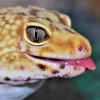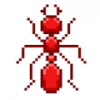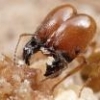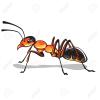my new ants for Hunter were doing it when they started moving into their new setup. they were wafting scent around the test tube to get the others to follow. at first it was 2 then 5 then once the 1st queen left it emptied out in a hurry.
Ant Species kept
Temnothorax Longispinosus.-Journal(discontinued)-(formerly)
Camponotus Noveboracensis (formerly)
Camponotus Nearticus-formerly
Tetramorium sp.-formerly
Camponotus Pennsylvanicus Queen & brood.-formerly
Tapinoma Sessile-Journal (3 queen colony)-formerly
Tapinoma Sessile #2 (2 queen colony)-formerly
Aphaenogaster Picea-Journal-active
Crematogaster sp.(Cerasi or Lineolata) Queen with 3 workers and brood-formerly
Crematogaster sp. #2 (Cerasi or Lineolata) Queen with brood-formerly
Formica sp. polygenus-active 300+ workers-active
Formica Subsericea-active 25+ workers-active
Myrmica Rubra 400+ workers 3 queens-active
























